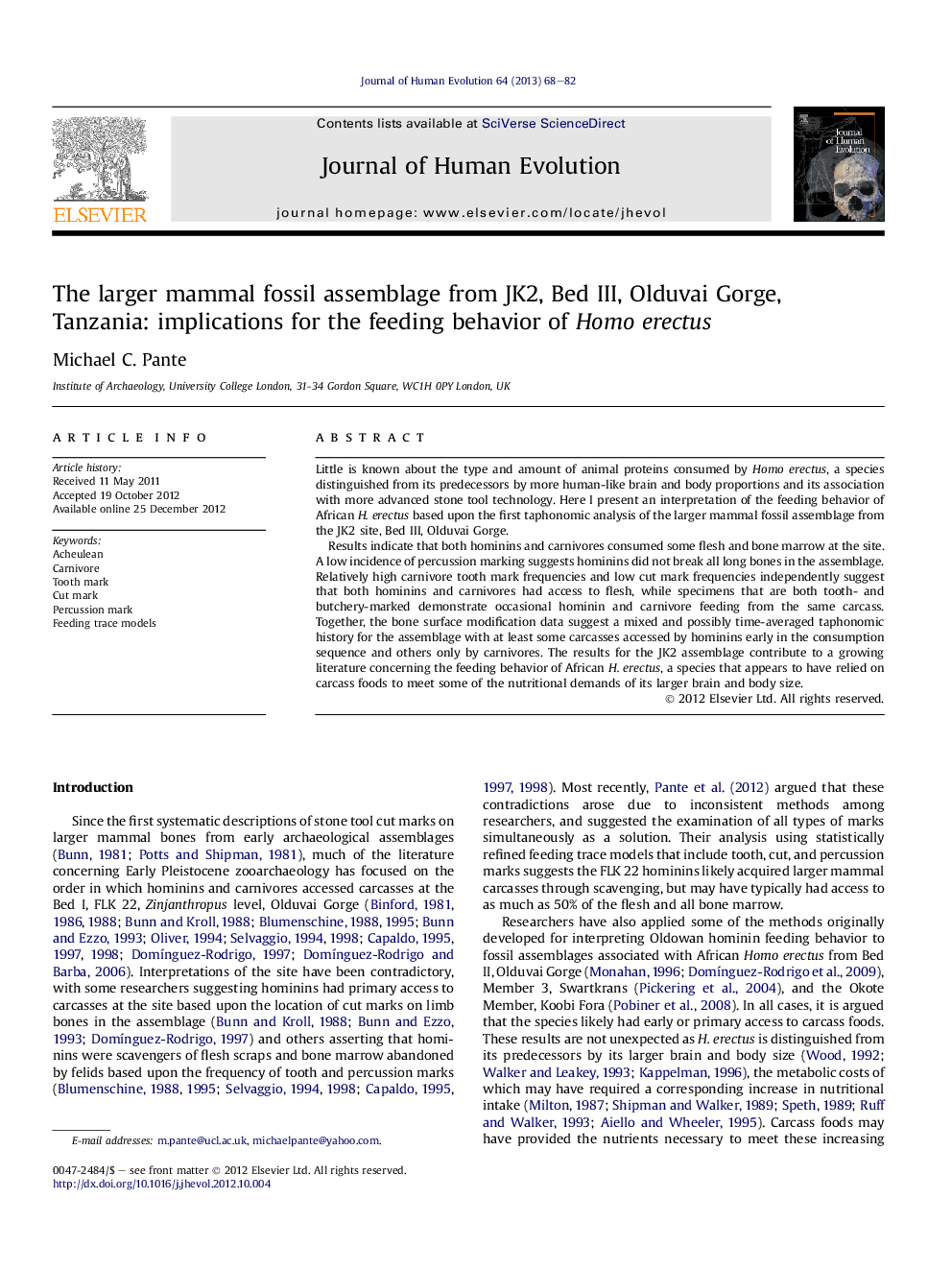| Article ID | Journal | Published Year | Pages | File Type |
|---|---|---|---|---|
| 4556302 | Journal of Human Evolution | 2013 | 15 Pages |
Little is known about the type and amount of animal proteins consumed by Homo erectus, a species distinguished from its predecessors by more human-like brain and body proportions and its association with more advanced stone tool technology. Here I present an interpretation of the feeding behavior of African H. erectus based upon the first taphonomic analysis of the larger mammal fossil assemblage from the JK2 site, Bed III, Olduvai Gorge.Results indicate that both hominins and carnivores consumed some flesh and bone marrow at the site. A low incidence of percussion marking suggests hominins did not break all long bones in the assemblage. Relatively high carnivore tooth mark frequencies and low cut mark frequencies independently suggest that both hominins and carnivores had access to flesh, while specimens that are both tooth- and butchery-marked demonstrate occasional hominin and carnivore feeding from the same carcass. Together, the bone surface modification data suggest a mixed and possibly time-averaged taphonomic history for the assemblage with at least some carcasses accessed by hominins early in the consumption sequence and others only by carnivores. The results for the JK2 assemblage contribute to a growing literature concerning the feeding behavior of African H. erectus, a species that appears to have relied on carcass foods to meet some of the nutritional demands of its larger brain and body size.
